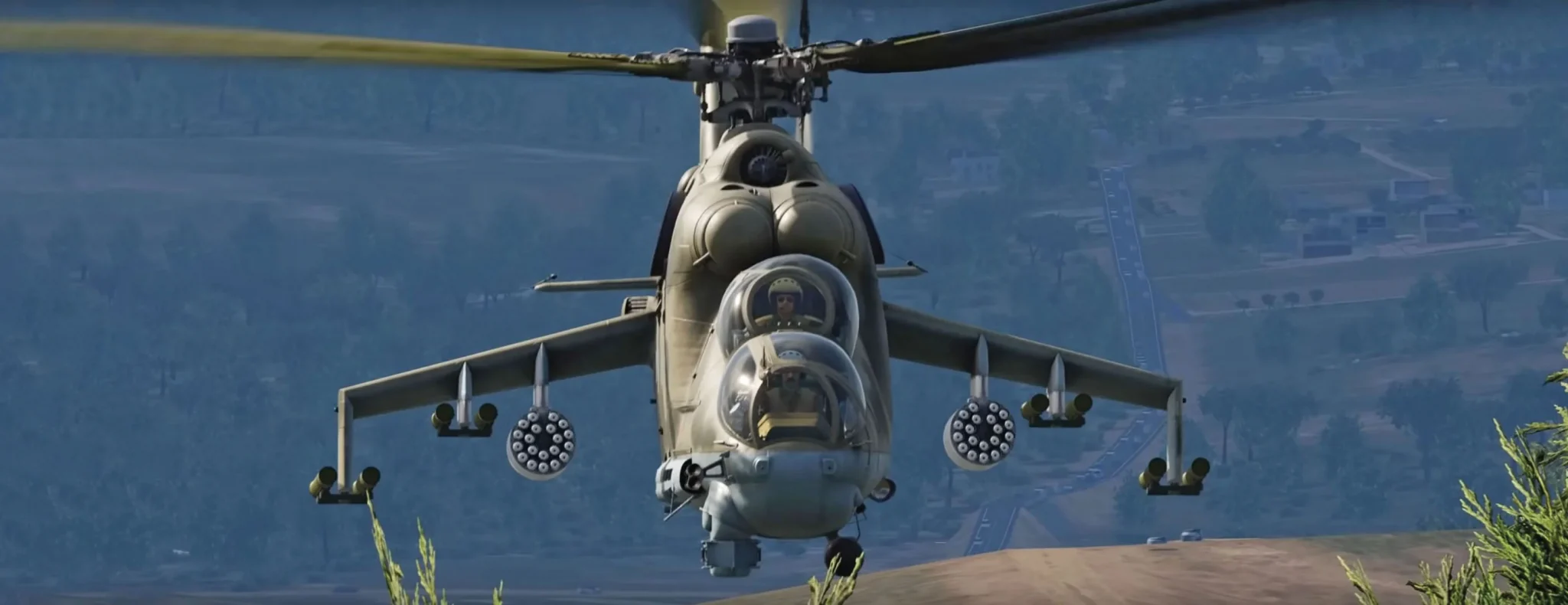
The Mi-24 (NATO reporting name Hind) is one of the most widely-known assault helicopter gunships in the world. Development of a new helicopter commenced in 1968. It was developed from the tried and tested Mi-8 transport helicopter and was first flown in V-24 prototype form in 1969. Production commenced in 1971 and ceased in 1991.
The Mi-24 Hind is a Russian attack helicopter that has been widely used by various countries around the world. It features a heavily armored fuselage, making it more resistant to enemy fire, and is armed with a range of weapons systems. These typically include a combination of machine guns, rockets, and anti-tank guided missiles.
In addition to its attack capabilities, the Mi-24 Hind can also transport a squad of troops, typically up to eight to ten fully equipped soldiers. This allows it to provide close air support to ground forces and perform tactical insertions and extractions in combat zones.
The combination of its offensive firepower and troop transport capacity makes the Mi-24 Hind a valuable asset in military operations, particularly in providing support to ground forces in a wide range of combat scenarios.
It’s worth noting that the Mi-24 Hind has been in service for several decades, and newer variants and models of attack helicopters have been developed since its introduction. However, the Mi-24 Hind remains a respected and well-known platform in the field of attack helicopters.
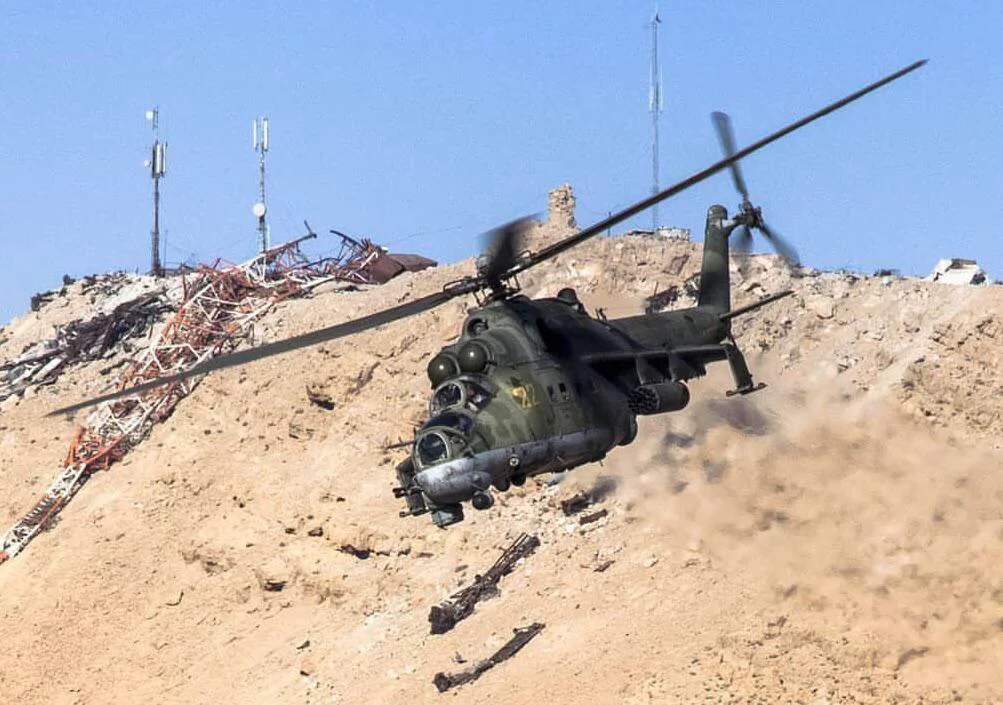
Over 2 300 Hinds of al variants were produced. The Mi-24 series gunsips remain in widespread service with at least 50 air arms. It is estimated that around 1 500 of these helicopters remain in service. The Russian Army being the most significant operator with around 700 helicopters. Other major operators include Algeria, Angola, Belarus, Czech Republic, Hungary, India, Kazakhstan, Libya and Poland. The Mi-24 has seen widespread combat action, fighting in Afghanistan, Chad, Angola, Sri Lanka, Chechnya and in other hotspots.

The Mi-24 is certainly one of the most capable attack helicopters. It is fast, agile heavily armed and armored. It can be used for close air support, anti-tank operations or aerial combat. Initial production version was the Mi-24A. It was rushed in production. This version had a large glass cockpit. It was produced since 1971 until 1973. Nearly 250 of these helicopters were built. The Mi-24B was an interim variant with some improvements. It was trialed in 1971-1972, but never reached production.
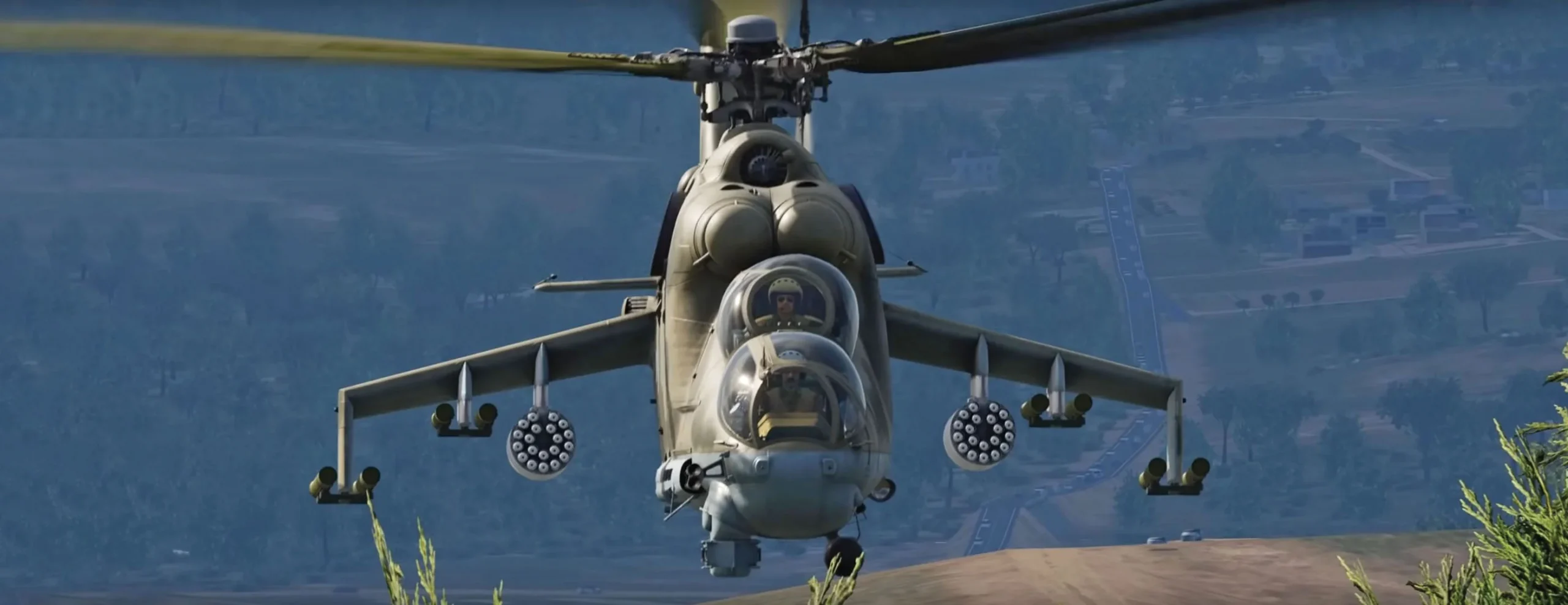
The definitive production variant was the Mi-24D (Westen reporting name Hind-D). Produced since 1973 to 1977. Over 600 of these helicopters were built. It was the most numerous version of the Mi-24. Its export version was the Mi-25. This version introduced heavily-armored, stepped cockpits ant an undernose gun turret. The cockpit is protected by ballistic resistant windscreens and titanium armored tub. Vital components of the helicopter are also armored. These are bullet resistant to up to 12.7 mm heavy machine gun fire. Even its rotor blades are made of titanium.
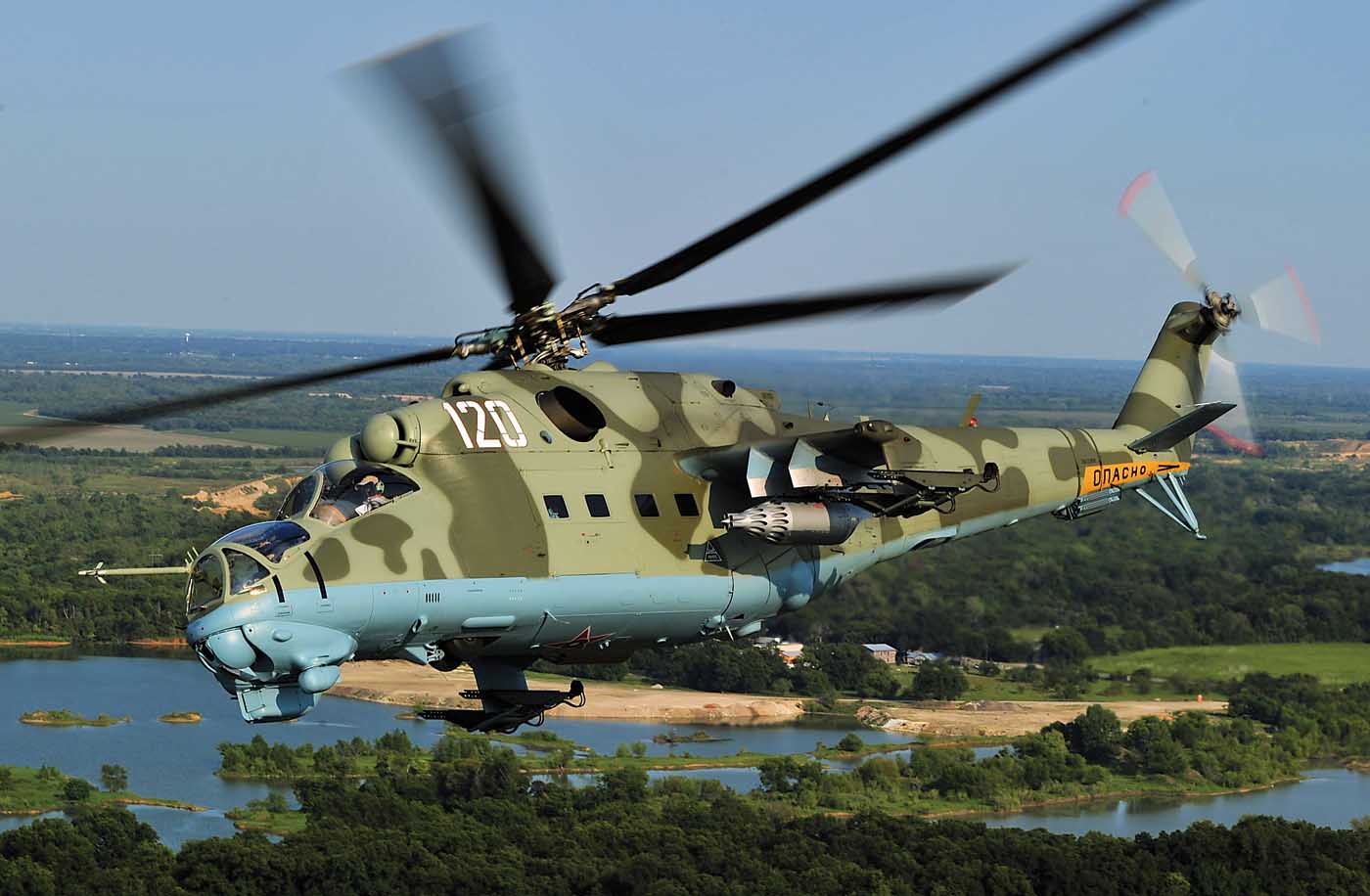
This gunship has a crew of three, including pilot, gunner and flight engineer. It can also carry up to 8 fully-equipped troops, or 12 partially equipped soldiers. So this gunship has a significant transport capability. Due to this feature it is typically used in different manner than other attack helicopters. It can be used for tactical airmobile operations. For example the Mi-24 can soften enemy defenses or suppress enemy fire before landing its troops. Once the troops are on the ground this gunship can support them with its ωεɑρσռs. These helicopters can land their troops behind enemy lines, quickly capturing key objectives. It can be also used to neutralize enemy artillery, anti-tank systems, armored vehicles, tanks and so on.

This helicopter is capable of a mixed armament loadout. Early versions of the Hind gunship carried 9M17P Skorpion (Western reporting name AT-2 or Swatter) anti-tank guided missiles. However it is not a dedicated anti-tank helicopter but rather a ground support helicopter. The Mi-24 is extremely fast. In 1976 a version of this helicopter set an official world speed record of 368 km/h. No other helicopter could beat this record until 1986. From 1976 to 1978, the Mi-24D was joined in service by the up-engined Mi-24V (Western reporting name Hind-E and export designation Mi-35), which also featured improved armament of tube-launched 9M114 anti-tank guided missiles of the new Shturm-V system (Western reporting name AT-6 or Spiral). Combat experience in Afghanistan led to the development of the Mi-24P (Western reporting name Hind-F) with a 30 mm GSh-30K twinbarrel cannon mounted on the forward fuselage. Later specialised variants include the Mi-24RKR Hind-G1 NBC reconnaissance helicopter, Mi-24K Hind-G2 for artillery fire correction, Mi-24BMT minesweeper conversion and Mi-24PS for paramilitary use.
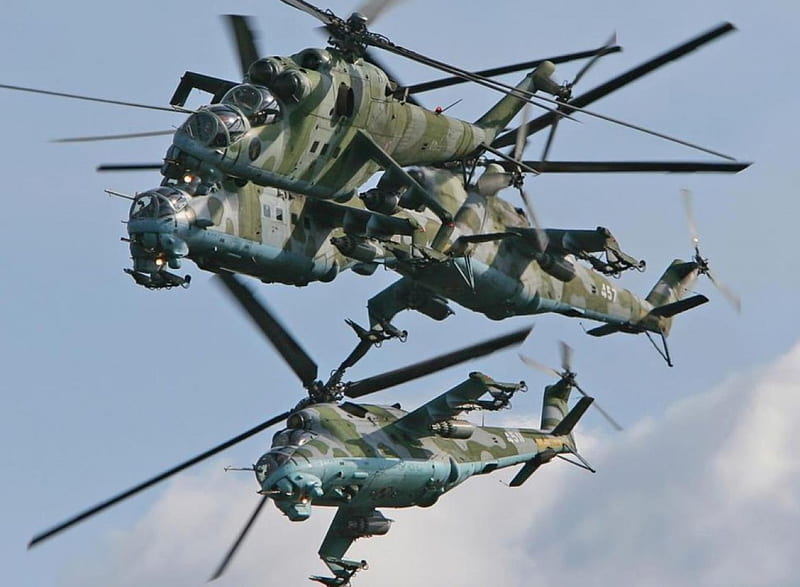
The Mi-24VM (export designation Mi-35M) is available from Mil as a staged upgrade that includes a refurbished airframe for prolonged service, Mi-28 dynamic systems, upgraded 2 194 shp (1 636 kW) TV3-117VMA engines, and MFD-equipped cockpit compatible with night vision googles, pilot’s head-up display, forward-looking infra-red, a nose turret carrying a GSh-231 23 mm twin-barrel cannon, 9M120 (AT-12 or Swinger) ATGMs, and compatibility with Igla-V (Western reporting name SA-18 or Grouse) air-to-air missiles. The Mil company proposed to upgrade around 200 Russian Federation Hinds to these standards as Mi-24VMs, but the future of this programme is uncertain. The market for upgrades is substantial as many of these helicopters are still in operational service. A number of upgrade programmes are available.





